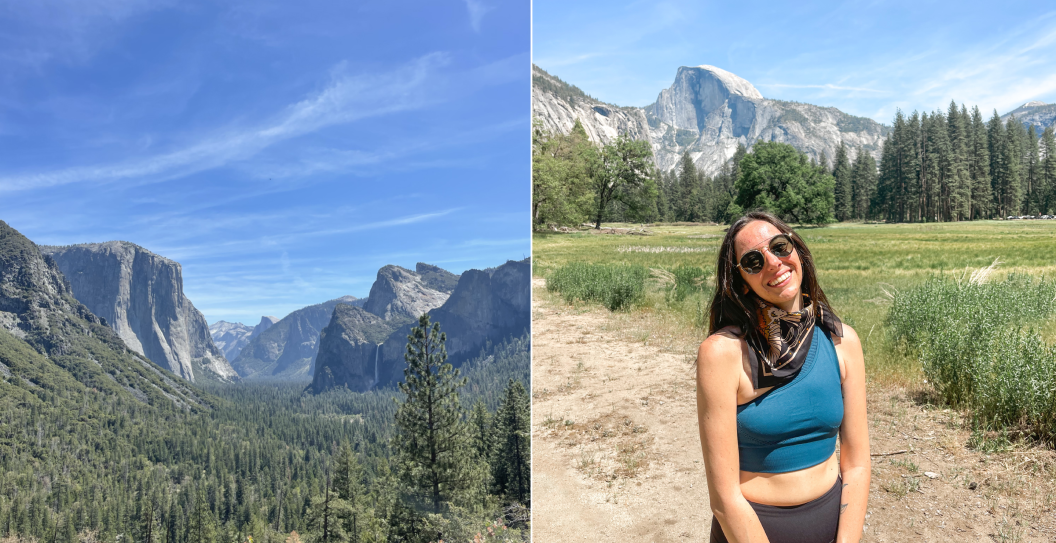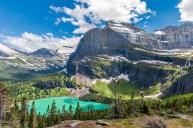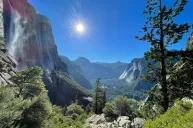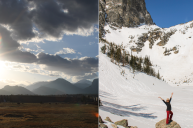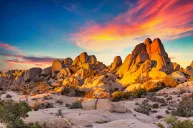The first time I hiked in Yosemite National Park, I was blown away. Sure, you see Yosemite in pictures and videos on YouTube, but that's nothing compared to experiencing it in person. The vast size of the park, the granite cliffs, stunning waterfalls—including Yosemite Falls, the tallest waterfall in North America—and sprawling meadows astounded me.
Yosemite National Park has since become my favorite national park (and place!) in the U.S. I've made it my vow to visit it every year, and it sparked my mission of visiting all of the national parks in America. (I'm currently at 18 of 63!)
Located in the Sierra Nevada mountains of California, Yosemite offers visitors an enticing blend of natural wonders and outdoor activities. It's home to iconic landmarks like Half Dome and El Capitan, which attract climbers and photographers from around the world.
Whether you're seeking hiking trails, camping spots, or simply a peaceful retreat in nature, Yosemite National Park has something to offer everyone. Ready to plan your visit? Consider this your ultimate guide to optimizing your trip to Yosemite.
What Should You Visit Yosemite?
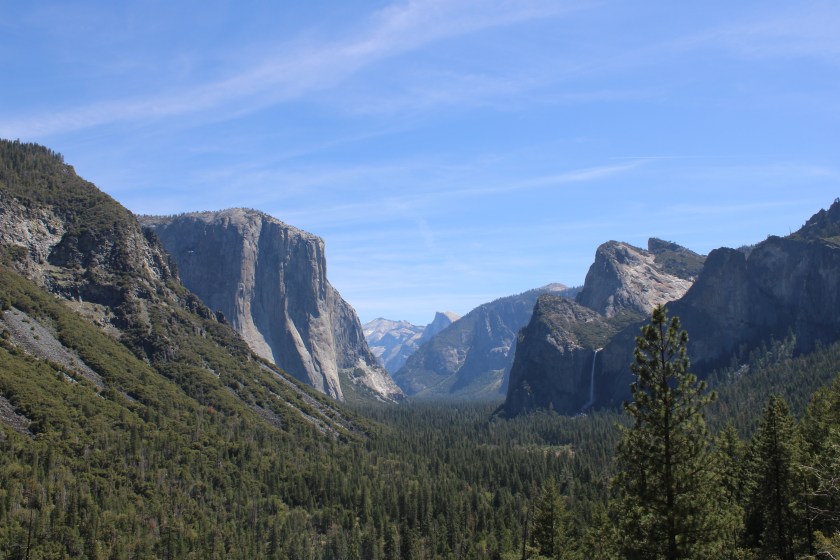
Kendra Tustin for Wide Open Spaces
The fascinating topography of Yosemite National Park formed through a series of geological processes over millions of years. The park's iconic features, such as its granite cliffs and deep valleys, can be traced to the uplift and erosion of the Sierra Nevada mountain range.
Around 10 million years ago, tectonic forces caused the uplifting of the Sierra Nevada, creating a high plateau. Over time, erosion from ice, water, and wind shaped the landscape.
During the last Ice Age, approximately 2 million years ago, glaciers sculpted the valleys and carved out U-shaped canyons. The immense pressure and movement of the glaciers resulted in the iconic features seen today, including Yosemite Valley, Half Dome, and El Capitan.
The exposed granite cliffs, such as those in Yosemite Valley, are the result of erosion stripping away the surrounding rock layers.
Yosemite's diverse landscape is a testament to the complex geological history that has shaped the park into the natural wonder it is today.
Where Is Yosemite National Park Located?
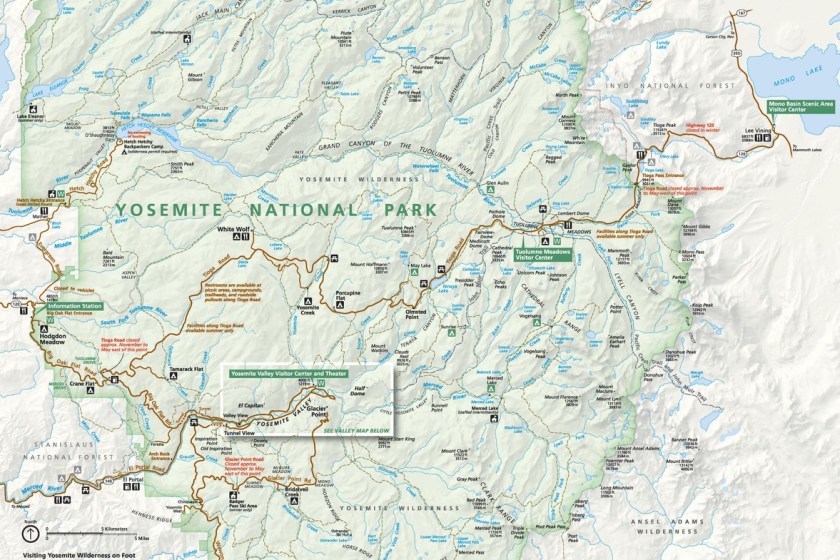
National Park Service
Yosemite National Park is located in the western Sierra Nevada mountains of California. The park covers an area of about 1,200 square miles and is primarily located in Mariposa County but extends into Tuolumne and Madera counties as well.
It's about four hours from San Francisco, three hours from Sacramento, and eight hours from Las Vegas.
How Do You Get to Yosemite?
This entrance is located northwest of Mariposa and is accessed via Highway 140 from Merced. It provides direct access to Yosemite Valley. Located near the town of Fish Camp, this entrance is accessed via Highway 41 from Fresno. It provides access to Wawona, Yosemite Valley, and Glacier Point. Situated east of Groveland, this entrance is accessed via Highway 120 from the west or east. It provides access to Tuolumne Meadows, Tioga Pass, and other high-country areas. (FYI: Tioga Pass road is typically closed during winter months due to snow. Sometimes it can remain closed into July!)
Located in Fresno, California, FAT is the closest airport to the south entrance of Yosemite National Park. It's approximately a 1.5- to 2-hour drive to the park. This airport is served directly by public transportation in the form of Yosemite Area Regional Transit System (YARTS).
Located in Merced, California, MCE is the closest airport to the Arch Rock Entrance of Yosemite National Park. From there, it's approximately a 2-hour drive to the park.
Located in between Sacramento and Woodland, California, Sacramento International Airport is another option when traveling to Yosemite National Park. The airport is roughly three hours to the south entrance of the park.
When Is the Best Time to Visit Yosemite?
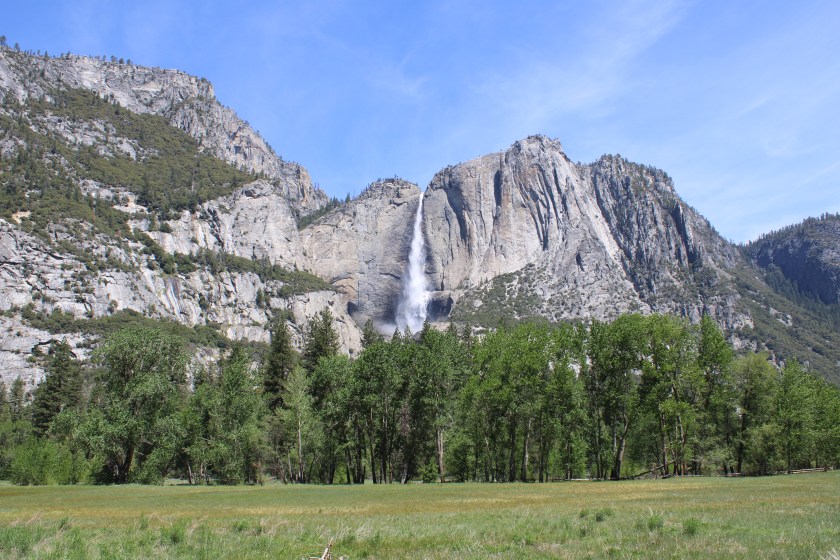
Kendra Tustin for Wide Open Spaces
The best time to visit Yosemite National Park largely depends on your own preferences. Each season has its own charm, so it's important to consider your preferred activities, weather conditions, and crowd levels when choosing when to visit Yosemite. Here's what you might expect, by the seasons:
March to May: Spring brings blooming wildflowers and rushing waterfalls as the snow melts. The park is less crowded during this time, and you can enjoy moderate temperatures. However, some higher-elevation areas may still have snow, limiting access to certain trails.
June to August: Summer is the peak tourist season with warm temperatures, open trails, and longer days. The valley is bustling with visitors, and popular attractions can get crowded. You'll need to make reservations for accommodations and activities well in advance.
September to November: Fall is a beautiful time to visit Yosemite as the foliage transforms into vibrant hues of red, orange, and gold. The weather remains pleasant, and the park sees fewer crowds compared to summer. September is a great time for hiking and rock climbing.
December to February: Yosemite's winter offers a serene and snowy landscape. Some roads and facilities may be closed due to snowfall, but you can enjoy winter activities like snowshoeing, cross-country skiing, and ice skating (at Curry Village). Just keep in mind that Yosemite Valley may experience occasional closures due to storms.
Yosemite Reservations, Passes, and Entrance Fees
Some good news: Yosemite National Park no longer requires reservations. However, keep in mind that does mean more crowds, particularly during the peak summer season.
There are five days throughout the year that you can visit any national park for free—make sure to check the NPS website for the most up-to-date information. But, otherwise, you'll need to pay an entrance fee to Yosemite. The current rates for a pass good for seven consecutive days are $35 to enter by private vehicle, $30 for a motorcycle, and $20 per person if entering on foot, by bicycle, or on horseback.
If you want to visit Yosemite numerous times throughout the year, you can purchase an annual pass to visit the park for $70. You can also purchase an America the Beautiful annual pass for $80 for access to all of the national parks for 365 days.
Where to Stay in Yosemite National Park
Yosemite is so vast, which means that there are a ton of options for accommodations. Keep in mind that the hotels in Yosemite National Park are pricey and get booked up extremely fast, especially during the summer, so try to get a reservation at least 2-3 months in advance.
Located near the park's southern entrance, Wawona features the historic Wawona Hotel. It offers a rustic charm and is close to the Mariposa Grove of Giant Sequoias. Situated just outside the park's western boundary, Yosemite West offers vacation rental homes and condos with easy access to Yosemite Valley, Glacier Point, and Badger Pass Ski Area. Located just outside the western entrance, El Portal is home to a few hotels and lodges, providing a convenient base for exploring the park. These nearby towns offer a range of accommodation options, including hotels, motels, bed and breakfasts, and vacation rentals. They are within a reasonable driving distance from the park's entrances. Yosemite National Park has several campgrounds within the park, including Upper Pines, Lower Pines, and North Pines. These can be reserved in advance—an absolute must if you want to camp in the summer—and provide a more immersive camping experience.Best Places to Stay While Visiting Yosemite
You can easily drive your vehicle into the park, which has tradeoffs. As I learned on a trip to Yosemite this summer, if you visit during the busy season, parking fills up fast. Because Yosemite did away with the reservation entry system, that means more people vying for spots. The biggest tip I can give you is to get to the park as early as you can—I arrived at 5:45 A.M. and had plenty of parking to choose from. The caveat: You may want your vehicle to get to other parts of the park. And if you leave your parking spot, you could have a difficult time finding another. My advice is to leave your car once you find parking. Luckily, there are a few ways of getting around the valley without moving your car from your parking space. Yosemite National Park offers a free shuttle system that provides transportation around Yosemite Valley, the busiest area of the park. I used the shuttle and while it was convenient, it got packed very quickly in July, which could mean waiting up to 30 minutes in line for the next one. (Somehow, I got lucky and never had to wait longer than 10 minutes!) You also have the option to bike around the park! You can bring your own or you can rent a bike from any of the three locations in the park: Yosemite Valley Lodge, Curry Village, or Yosemite Village. The rental locations are open from 8 A.M to 7 P.M., with the last bike rental of the day at 5:45 P.M. You can choose among a few options in terms of your needs. Current rates include a full day for $40 for a standard bike or $75 for a bike with trailer to haul your gear.Getting Around Yosemite National Park
Things to Do In Yosemite National Park
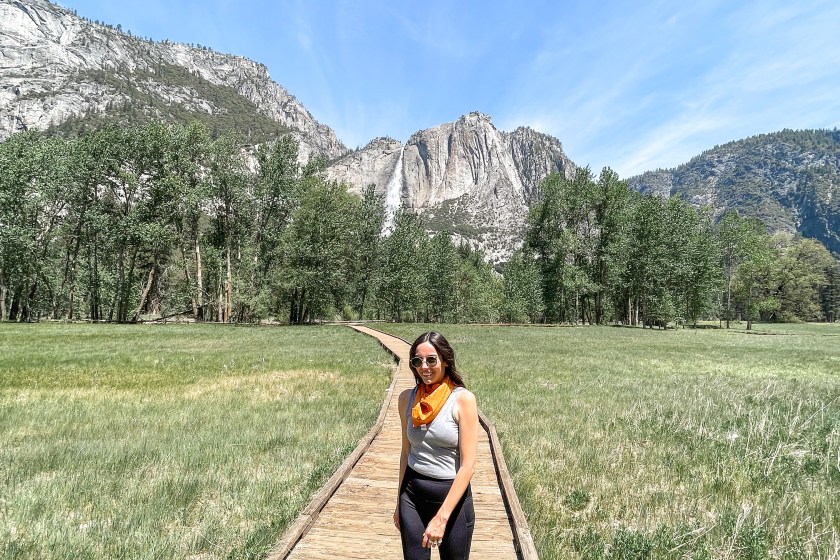
Kendra Tustin for Wide Open Spaces
Probably the most sought hike in Yosemite National Park, Half Dome is the one visitors descend upon from all over the world to trek. It's not for the faint of heart, however. This hike requires a permit to tackle the steep ascent using cables near the summit. (If the cables are down, or you don't want to attempt them, no permit is required.) At the top, you'll be rewarded with panoramic views of the valley. The Falls trails are broken up into two sections. Lower Yosemite Falls is a quick easy walk through the forest until you reach a bridge, where you can watch the falls thundering down over giant rocks. If you don't mind getting wet, you can even climb the rocks to get close to it. Upper Yosemite Falls is strenuous, but it takes you to the very top of the falls and you are rewarded with amazing views of the valley. FYI, Yosemite Falls is very popular and gets crowded quickly during peak season. This iconic trail takes you up close to two breathtaking waterfalls, Vernal Fall and Nevada Fall, with misty sprays and scenic vistas. This hike is beautiful, but take your time. It gets steep and the rocks are very slippery due to the mist from the falls. My favorite spot by far in Yosemite is Glacier Point. Starting at the Glacier Point trailhead or via the Four Mile Trail (see below), arriving at Glacier Point rewards you with panoramic views of Yosemite Valley, Half Dome, and the High Sierra. You'll find a stunning view of Half Dome smack dab in the center—it's so close, you feel like you can jump on it. If you're like me, it might just bring you to tears! This hike takes you through the scenic Tuolumne Meadows and offers a climb to the top of Lembert Dome, providing sweeping views of the surrounding mountains. This trail starts at Yosemite Valley and leads to Glacier Point where you'll enjoy breathtaking views of Yosemite Valley, El Capitan, and Half Dome. This trail explores the giant sequoias in Mariposa Grove, home to some of the largest trees on earth, including the famous Grizzly Giant and California Tunnel Tree. This hike takes you to the stunning Cathedral Lakes, nestled beneath granite peaks. You'll encounter pristine alpine lakes and scenic vistas along the way. This challenging hike rewards you with 360-degree views of Yosemite Valley, Half Dome, and the surrounding peaks from the summit of Clouds Rest. Some choose this hike as a worthwhile consolation prize if they cannot obtain permits to hike Half Dome. This trail offers an unforgettable journey from Glacier Point to Yosemite Valley, passing through (yes) panoramic viewpoints, waterfalls, and diverse landscapes. Craving more exploration? These Yosemite hikes are also worth your consideration:Hiking
Hiking in Yosemite National Park is understandably a popular activity, offering a wide range of trails that cater to all skill levels. The park's diverse landscapes provide opportunities for day hikes, overnight trips, and even extended backpacking adventures.
Scenic Viewpoints and Drives
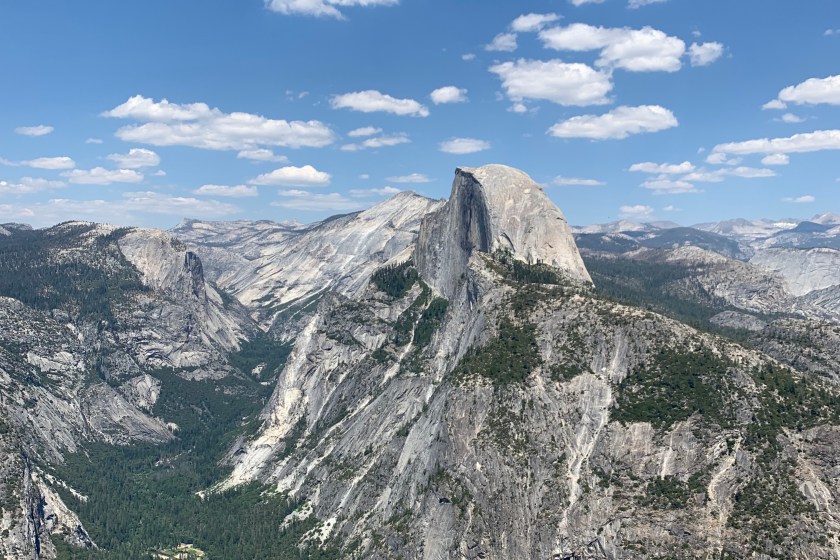
Kendra Tustin for Wide Open Spaces
This scenic drive spans approximately 46 miles and takes you through the high country of Yosemite. You'll pass through meadows, alpine lakes, and granite peaks, and enjoy panoramic views along the way. Some of the notable viewpoints on Tioga Road include Olmsted Point and Tenaya Lake. Keep in mind, this road always closes for winter. Make sure to double check the NPS website for the most up-to-date road closures. This 16-mile road takes you to Glacier Point, one of the most famous viewpoints in Yosemite. From here, you can admire stunning panoramic views of Yosemite Valley, Half Dome, and the surrounding mountains. The road is typically open from late spring through fall. Have you ever seen a picture of Yosemite that shows all the granite rocks with a bunch of trees below? This is the spot and it's a must on your itinerary when visiting Yosemite National park. Located near the Wawona Tunnel entrance, this viewpoint offers an awe-inspiring view of Yosemite Valley. From Tunnel view, you can see El Capitan, Bridalveil Fall, Half Dome, and the valley's granite cliffs. El Capitan is a massive granite monolith located in Yosemite National Park. It's one of the most famous landmarks in Yosemite and attracts climbers and sightseers from around the world. El Capitan stands approximately 3,000 feet above the floor of Yosemite Valley, and its sheer rock face is considered one of the ultimate challenges for rock climbers. One of the best locations to get a cool view of El Capitan from below in Yosemite National Park is the El Capitan Meadow. It offers a relatively close vantage point and provides a stunning perspective of the sheer rock face. To access the El Capitan Meadow, drive or take the free shuttle bus to the El Capitan Picnic Area parking lot. From there, take a short walk to the meadow. It's especially impressive during the golden hours of sunrise or sunset when the granite catches the beautiful light. Bring some chairs, sit back, and relax. You may see a few people climbing, so bring some binoculars as well! This viewpoint, located on Northside Drive near El Capitan, offers a picturesque scene of the Merced River flowing through Yosemite Valley. It's a great spot for capturing reflections of the surrounding cliffs and foliage. The 13-mile Valley Floor Loop is a scenic drive that takes you around Yosemite Valley. You can experience the park's iconic landmarks, meadows, and forests from the comfort of your vehicle.
Other Activities in Yosemite
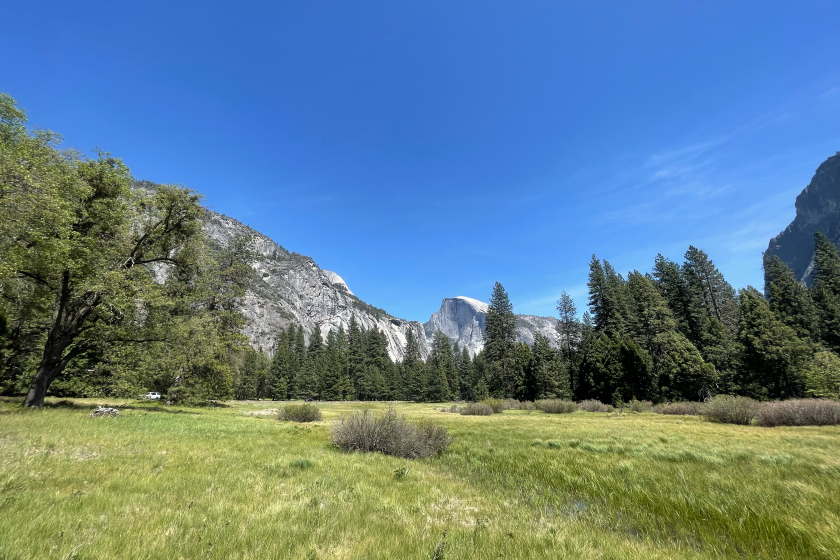
Kendra Tustin for Wide Open Spaces
Yosemite National Park has several visitor centers that provide information exhibits, and educational resources to visitors. Yosemite is a renowned destination for rock climbing. Experienced climbers can challenge themselves on iconic granite formations such as El Capitan, Half Dome, and Cathedral Peak. Beginners should take advantage of the climbing schools and guides available for hire. Yosemite Valley offers bike rentals and several paved trails within the park where you can enjoy cycling. Biking is a great way to explore the valley floor and its beautiful surroundings. Joining the many ranger-led programs is a fantastic way to learn more about the park's natural and cultural history. Options include guided walks, campfire programs, stargazing sessions, and educational presentations offered by park rangers. During the cold season, Yosemite transforms into a winter wonderland. Visitors can enjoy activities such as snowshoeing, cross-country skiing, and ice skating (conditions permitting) in designated areas. When things thaw out, the Merced River and various lakes within Yosemite offer opportunities for swimming, fishing, and rafting during certain seasons and water conditions. Remember to check for any restrictions or permits required for fishing. Numerous picnic areas are available throughout Yosemite, providing peaceful spots to enjoy a meal amidst nature. Relax, unwind, and savor your lunch in the tranquility of the park.
What to Pack for Visiting Yosemite
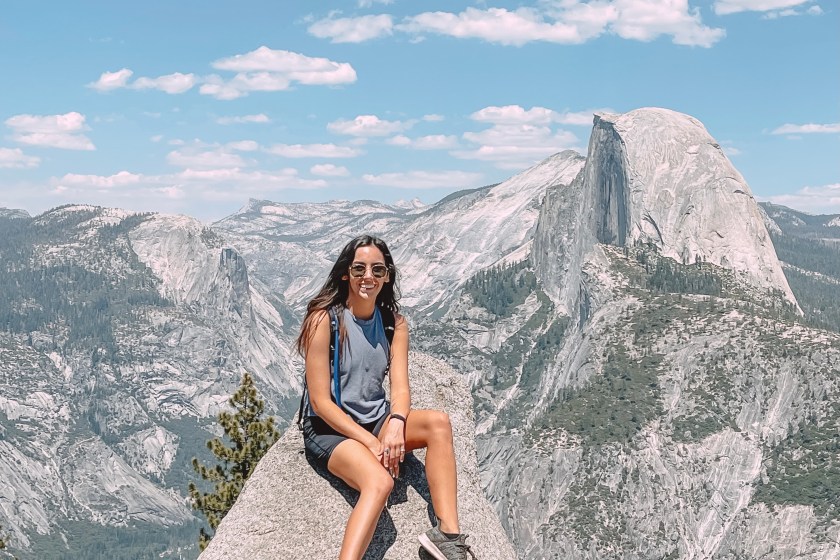
Kendra Tustin for Wide Open Spaces
There are some hiking essentials you'll want to bring, as you would on any hiking trip—such as a good backpack or daypack, first aid kit, sunscreen, and insect repellent—to ensure a safe and enjoyable experience.
After three visits to Yosemite, here are some other things I suggest you bring along.
- Clothing you can layer: Yosemite's temperatures can vary throughout the day and at different elevations, so dress in layers to accommodate changing weather conditions. Include items such as a lightweight jacket, long-sleeved shirts, pants, a hat, sunglasses, and sturdy footwear suitable for hiking or walking.
- Plenty of water and snacks: Don't forget to carry an adequate supply of water to stay hydrated during your visit. Snacks and/or a packed lunch are also recommended, especially if you plan on spending a significant amount of time exploring the park. If you don't bring enough or forgot, there are several stores in the valley where you can purchase additional water and snacks, but my advice is to bring your own as the valley store can be expensive!
- Park pass: Ensure you have a valid Yosemite National Park pass or pay the entrance fee when you arrive. This pass provides access to the park and supports its conservation efforts. FYI, some facilities within the park may accept only cash, so it's recommended to carry some cash for small purchases. However, major credit and debit cards are generally accepted in most locations.
- Navigation tools: Cell service is poor, so I recommend carrying a detailed map or guidebook of the park and a compass to help you navigate trails and find points of interest. (I bring a whistle that has a built-in compass.) A GPS device or smartphone with offline maps can also be useful; be sure to download them before entering the park.
Can I Bring My Dog to Yosemite?
Pets are allowed in Yosemite, but with limitations in order to protect them, other people, and wildlife. Dogs are permitted in developed areas, on fully paved roads, sidewalks, and bicycle paths (except when signage says otherwise), and in some campgrounds but not walk-in or group campsites.
Keep in mind that pets are not allowed:
- On many trails, including the trail to Vernal Fall, even if carried (Pets are allowed on the Wawona Meadow Loop)
- On unplowed roads covered in snow
- In undeveloped and wilderness areas
- In public buildings
- On shuttle buses
- In lodging areas
- In all walk-in and group campgrounds/campsites, including camp 4
- In any other areas, as signed
Is a Trip to Yosemite National Park Worth It?
Without a doubt, it's so worth it! I've found Yosemite's beauty unparalleled and it truly inspires awe and appreciation for the wonders of the natural world.
With so many trails, viewpoints, and activities, there's something for everyone at this park. As noted, Yosemite's popularity means that certain areas and trails can become crowded, especially during peak seasons. Planning ahead, making reservations when required, and exploring lesser-known areas of the park can help enhance your experience.
READ MORE: The Ultimate Guide To Visiting Arches National Park
